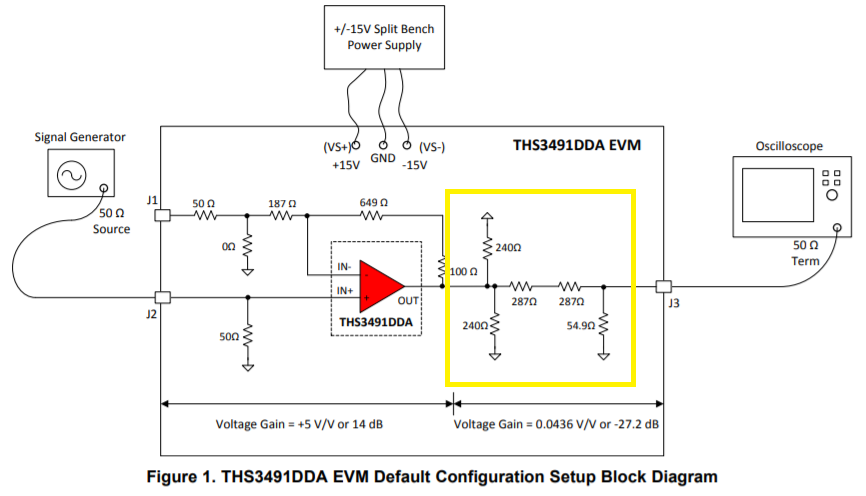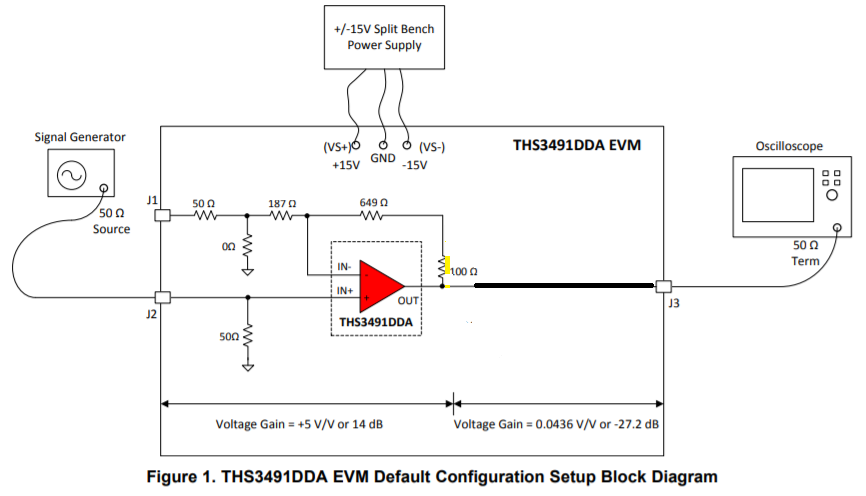Hello everyone,
I recently purchased the THS3491DDA EVM, I tried testing it with the Signal Generator and Oscilloscope, as described in the picture below.
For my project, My test input range is 1VPP to 5VPP at 10 MHZ max, and have a smooth, no noise signal with a 5VPP to 25 VPP on output respectively.
Suffice to say, I was not getting those results. I read the datasheet and it mentioned that the resistor network(Highlighted below) significantly decreases the gain.
Is there a way to surpass that resistor network and what would need to be done to get the results I'm seeking above? Thanks.
~Nate

-
Ask a related question
What is a related question?A related question is a question created from another question. When the related question is created, it will be automatically linked to the original question.



